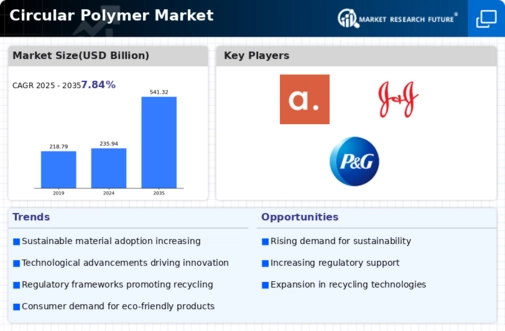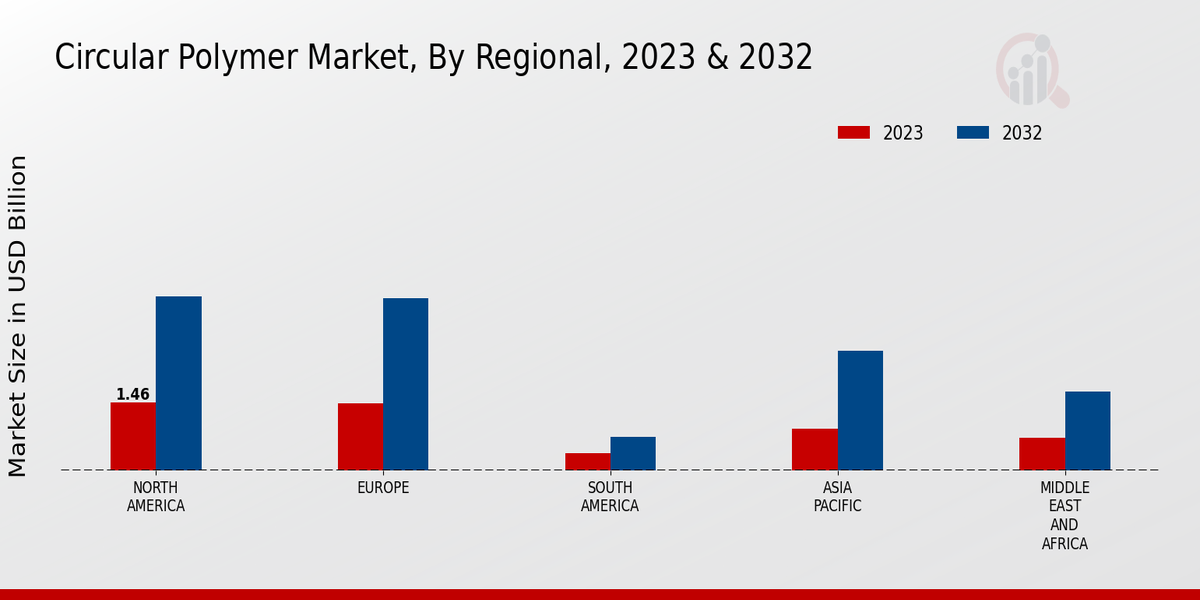Sustainability Initiatives
The Global Circular Polymer Market Industry is increasingly driven by sustainability initiatives as governments and organizations prioritize environmental responsibility. The shift towards circular economy principles encourages the use of recycled materials, reducing waste and resource consumption. For instance, the European Union has set ambitious targets for plastic recycling, aiming for 50 percent of plastic waste to be recycled by 2025. This regulatory framework fosters innovation in circular polymers, as companies seek to develop sustainable products that align with these goals. As a result, the market is projected to reach 235.94 USD Billion in 2024, reflecting the growing demand for eco-friendly solutions.
Technological Advancements
Technological advancements play a pivotal role in shaping the Global Circular Polymer Market Industry. Innovations in polymer processing and recycling technologies enhance the efficiency of converting waste into high-quality circular polymers. For example, advancements in chemical recycling methods allow for the breakdown of plastics into their original monomers, facilitating the creation of new polymers. This not only improves the quality of recycled materials but also expands the range of applications for circular polymers. As these technologies evolve, they are expected to contribute to a compound annual growth rate of 7.84 percent from 2025 to 2035, indicating a robust growth trajectory for the industry.
Collaboration Across Industries
Collaboration across industries is emerging as a key driver in the Global Circular Polymer Market Industry. Partnerships between manufacturers, recyclers, and technology providers facilitate the development of innovative solutions for circular polymer production. For example, initiatives like the Ellen MacArthur Foundation's New Plastics Economy aim to unite stakeholders in creating a circular economy for plastics. Such collaborations enhance knowledge sharing and resource optimization, leading to more efficient recycling processes and product development. This collective effort is expected to support the industry's growth, aligning with the anticipated CAGR of 7.84 percent from 2025 to 2035, as stakeholders work together to address the challenges of plastic waste.
Regulatory Support and Policies
Regulatory support and policies significantly impact the Global Circular Polymer Market Industry. Governments worldwide are implementing regulations aimed at reducing plastic waste and promoting recycling initiatives. For instance, the United States has introduced various policies encouraging the use of recycled materials in manufacturing processes. These regulations not only create a favorable environment for circular polymer production but also incentivize companies to invest in sustainable practices. As these policies gain traction, they are likely to enhance market growth, contributing to the projected increase in market size to 235.94 USD Billion in 2024. This regulatory landscape fosters innovation and collaboration among stakeholders in the circular economy.
Consumer Demand for Eco-Friendly Products
Growing consumer demand for eco-friendly products significantly influences the Global Circular Polymer Market Industry. As awareness of environmental issues increases, consumers are more inclined to choose products made from sustainable materials. This trend is evident in various sectors, including packaging, textiles, and automotive, where brands are adopting circular polymers to meet consumer preferences. Companies like Unilever and Coca-Cola are already incorporating recycled materials into their product lines, responding to this shift. The rising demand for sustainable alternatives is expected to propel the market towards an estimated value of 541.32 USD Billion by 2035, underscoring the importance of aligning product offerings with consumer values.














